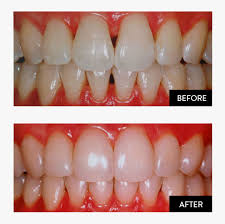
Dental bonding is a popular cosmetic dental procedure that involves applying a tooth-colored composite resin material to the surface of the teeth. The bonding material is then cured with a special light, which bonds it to the tooth and hardens it. This process can help to improve the appearance of chipped, cracked, discolored, or misshapen teeth. However, many people are unsure what to expect during the recovery process after dental bonding. In this article, we will explore what the recovery process is like bonding before and after and what results you can expect.
The Procedure
Before we delve into the recovery process, let’s quickly review what the bonding procedure involves. First, your dentist will prepare your tooth by roughening the surface with a mild acid solution. This helps the bonding material adhere better to the tooth. Next, the composite resin material is applied to the tooth and sculpted into the desired shape. Once the dentist is happy with the shape and size of the bonding, a special light is used to harden the material. Finally, the bonding material is polished to give it a natural-looking finish.
Recovery Process
If you are experiencing a dental emergency, it is important to seek treatment as soon as possible. Many dental offices offer emergency walk-in appointments for patients who need immediate care. You can search online for ” emergency walk-in dentist near me in Houston, TX” to find a dental office that offers this service.
The recovery process after a dental emergency will depend on the nature and severity of your condition. For example, if you have a chipped or broken tooth, your dentist may recommend dental bonding or a crown to restore the tooth’s appearance and function. If you have a toothache or an infection, you may need to undergo a root canal or receive antibiotics to alleviate the pain and prevent the infection from spreading.
It is important to follow your dentist’s instructions carefully after your emergency treatment to ensure a smooth recovery. This may include avoiding certain foods or activities, taking medication as prescribed, and attending follow-up appointments to monitor your progress. With prompt and effective treatment, most dental emergencies can be resolved quickly and with minimal discomfort.
Sensitivity
Some people may experience a slight sensitivity to hot or cold temperatures in the first few days after the bonding procedure. This is normal and should subside on its own within a few days. If the sensitivity persists or becomes severe, you should contact your dentist to ensure that there are no underlying issues.
Longevity
The longevity of dental bonding depends on several factors, including how well you take care of your teeth, your oral hygiene habits, and whether or not you grind your teeth at night. On average, dental bonding can last between 3-10 years with proper care and maintenance.
To help extend the life of your dental bonding, it is important to follow good oral hygiene practices, such as brushing your teeth twice a day, flossing daily, and using an antiseptic mouthwash. You should also avoid biting or chewing on hard objects, such as ice, pens, or your fingernails, as this can damage the bonding material.
If you grind your teeth at night, your dentist may recommend a mouthguard to protect your bonding material from damage. It is also important to attend regular dental check-ups so that your dentist can monitor the condition of your dental bonding and make any necessary repairs or adjustments.
If you notice any signs of damage to your dental bonding, such as chips, cracks, or discoloration, you should contact your dentist as soon as possible to have it repaired or replaced. By taking good care of your dental bonding, you can help ensure that it lasts for as long as possible and continues to improve the appearance of your smile.
Before And After
Dental bonding can have a dramatic impact on the appearance of your teeth. It can help to improve the shape, size, and color of your teeth, and can also help to fill in gaps between teeth. Many people are delighted with the results of their dental bonding procedure and feel much more confident about their smile.
Before the bonding procedure, your dentist will discuss your goals and expectations with you to ensure that you are both on the same page. They may also show you before-and-after photos of other patients who have undergone dental bonding to give you an idea of what to expect.
Conclusion
In conclusion, dental bonding is a simple and effective way to improve the appearance of your teeth. The recovery process is generally quite straightforward, and most people experience no significant discomfort or pain. With proper care and maintenance, dental bonding can last for several years, and can have a dramatic impact on the appearance of your smile. If you are considering dental bonding, speak to your dentist to see if it is right for you.